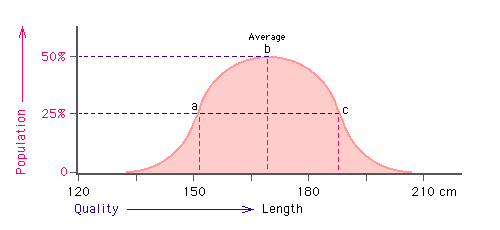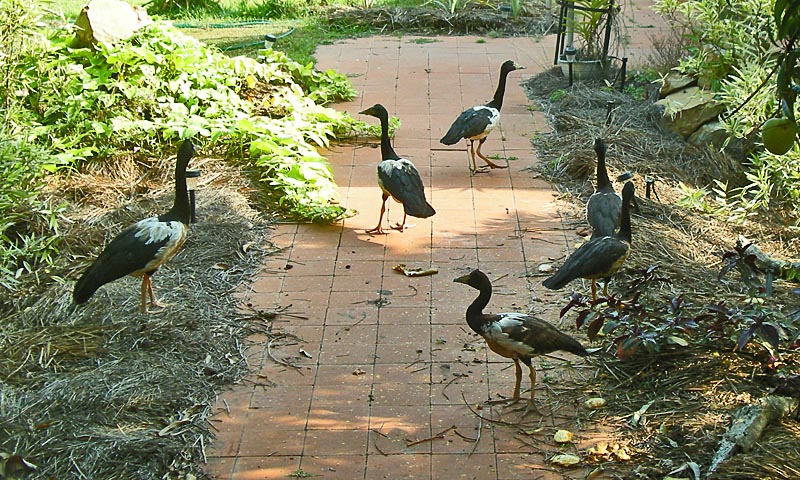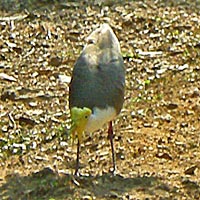|
Biographical Log of Michael Furstner - Page 120
2008 ||
2009 :
Jan |
Feb |
Mar |
Apr |
May |
Jun |
Jul |
Aug |
Sep |
Oct |
Nov |
Dec | Page :
Previous |
Next |
Most Recent -
Next -
Previous -
Page 1 -
Photos -
Index -
Topics -
MP3s -
Jazclass Links
Monday & Tuesday, October 26 & 27 2009
(diary, Eileen Gray, statistical bell curve distributions)
Late last night, or perhaps in the early hours of this (Monday) morning I
watched a documentary about the remarkable Irish artist and designer Eileen Gray.
Born in the late 19th Century it was not until around 1910 (at age 40, after moving first to London, then on to Paris) that she
started to develop her talent in arts. Initially in lacquer work and screens,
then tapestry and eventually in architecture and ultra modern furniture design.

 Her work was way ahead of its time, and much appreciated by the likes of
architect Le
Corbusier (who purchased the first house she designed on the Mediterranean
coast).
Her work was way ahead of its time, and much appreciated by the likes of
architect Le
Corbusier (who purchased the first house she designed on the Mediterranean
coast).
But it was not until after her death (at age 98, while still active
in design !), after her designs were commissioned for replication that her
work became appreciated by a wider audience and took off on a worldwide scale.
Her chairs, tables and bed designs have now reached iconic signature status.
Probably the most important visual representation in the field of
statistics is the so-called bell curve. Say for example you wish
to determine the spread and distribution of the length of a certain human race.

You take say a thousand measurements of individuals and plot the
results on a chart with the measured length ("quality") on the horizontal scale and the
number of readings larger and smaller than that length ("quantity") on the vertical scale.
This produces a bell curve like the one shown here on the right.
From this diagram you can read that the average length of the group of
people measured (b) is 170 cm tall. 25% of the people measured are taller than
190 cm (c) and 25% of them are shorter than 155 cm (a).
 The important thing to realise is that the bell curve reflects a natural
phenomena. This is how distributions in nature always are. No matter what
aspect you measure you will find some kind of bell curve as a reflection of it.
People's longevity, strength, intelligence, blood pressure. No matter what you
measure every individual of a population is part of a bell curve type
distribution, a part of nature.
The important thing to realise is that the bell curve reflects a natural
phenomena. This is how distributions in nature always are. No matter what
aspect you measure you will find some kind of bell curve as a reflection of it.
People's longevity, strength, intelligence, blood pressure. No matter what you
measure every individual of a population is part of a bell curve type
distribution, a part of nature.
On some aspects you may find yourself at
the front end of a distribution (say you are taller than most) on another aspect
(say intelligence) you may be in the middle or even near the lower end of the
distribution. But whichever it is you are an integral part of the natural
distribution. There can be no tall person without a short one, and there can
be no intelligent person without one less gifted.
If you look at life
from this perspective you will perhaps be less inclined to look down on those
which in some regard are less than you in the scheme of things. And likewise you
need not feel depressed by being less gifted than others in a certain respect.
We are all part of a natural distribution and are therefore in this respect all equally important, no matter how or where you fit into the overall picture.
 Bell curves are usually not static, but tend to shift over time reflecting continuing evolution of any species. Our generation, for example, has
a considerably longer life expectancy than say those of 50 years ago. And it has
just been on the news that a baby born right now has a life expectancy of over
100 hundred years.
Bell curves are usually not static, but tend to shift over time reflecting continuing evolution of any species. Our generation, for example, has
a considerably longer life expectancy than say those of 50 years ago. And it has
just been on the news that a baby born right now has a life expectancy of over
100 hundred years.
Other aspects of the human race too are moving forward. As
education spreads, intelligence and awareness of the world is increasing
dramatically.
Appreciation of modern art too (to return to Eileen
Gray) is continuously improving. Artists like Vincent van Gogh, Erik
Satie and many others, which were barely appreciated during their lifetime are now world
famous. Art appreciation of the broader public has caught up with them.

I have attempted to illustrate this by the hypothetical bell curve above. In 1930
Eileen Gray's work was appreciated by only a very small percentage of people
(d1 : with a fictitious Modern Art Appreciation factor of just under 80). But by 1990, when the general
appreciation of modern art had increased considerably (with the entire bell curve
moving to the right), her admirers had increased to 25% of the population (c2).
And no doubt this number will increase over time in the future.
Most Recent -
Next -
Previous -
Top -
Page 1 -
Photos -
Index -
Topics -
MP3s -
Jazclass Links
Wednesday, October 28 2009
(diary)
 "Les Girls", Mairead, Lisa and Gaileen, asked me to join
their bridge team for a two-nights social bridge tournament. Last night was the
first session and sustained by plenty of wine we blitzed the field (of 10
teams), scoring 90 IMPs (60 International Match Points more than our nearest competitor), so naturally
we are all smiling on this photo.
"Les Girls", Mairead, Lisa and Gaileen, asked me to join
their bridge team for a two-nights social bridge tournament. Last night was the
first session and sustained by plenty of wine we blitzed the field (of 10
teams), scoring 90 IMPs (60 International Match Points more than our nearest competitor), so naturally
we are all smiling on this photo.
But we have to repeat our performance next
Tuesday night once more and that is never a sure thing. However, no matter the
outcome, we are bound to have a good time again.
The weather is becoming rather strange, hot mostly, sometimes clear blue skies,
sometimes dark threatening clouds, last night some lightening, but no real
storm as yet. My new tyre has arrived and was fitted, I made an
appointment to get my car serviced next week. So I am gradually getting ready
for my 3,500 km road trip back to the Sunshine Coast in just over two weeks time.
Most Recent -
Next -
Previous -
Top -
Page 1 -
Photos -
Index -
Topics -
MP3s -
Jazclass Links
Thusday, October 29 2009
(diary)
 The Mango geese, although still very shy, appear to be much more adventurous
than in previous years. They fly into the top of trees, and also frequently come
right in front of my cabin as shown on this photo.
The Mango geese, although still very shy, appear to be much more adventurous
than in previous years. They fly into the top of trees, and also frequently come
right in front of my cabin as shown on this photo.
I still do my 2.2 km
walks every morning (5 days a week). The mango geese scurry or fly away when I
approach but about four smaller birds of a different species (Lapwings) are very territorial
and tend to hold their ground, partly showing off to all those much larger
geese.
 These are birds with a sleek light grey body and white neck. The males have a
bright yellow head and "beards", the females a black stripe on top of a white
head.
These are birds with a sleek light grey body and white neck. The males have a
bright yellow head and "beards", the females a black stripe on top of a white
head.
Standing on 20 cm (8 inches) tall, thin, spindly legs the
males, upon my approach, dig in their heels, and facing me make a
piercing cricket like noise until I have walked passed and away from them.
Occasionally they even aggressively fly towards me to scare me away from their
territory.
One of the females has a less aggressive but (to her mind) much more
effective tactic. Silently she keeps running ahead of me, guiding me away from
the mango trees to an other part of the ground. That I was going into that
direction anyway does not seem to occur to her.
The stock market (it appears) is having a bit of a breather. The American Dow
Jones has slipped back a few hundred points below the 10,000 mark and the
Australian All Ordinaries is also a few hundred short of the 5,000. The
Aussie Dollar is trying hard but just can't hold onto the 62 Euro cents mark (92
US cents). However interest rates are certain to rise again next week, with more
rises on top of that predicted for several following months, so the Aussie
Dollar remains firm and will probably continue to rise during the next six
months I think.
PS
I have been talking to Rick, who just returned from his daily job, cooking breakfasts for guests of the Darwin Airport Gateway Motel. He is a keen bird watcher and tells me that the birds I described above are called Lapwings. They have a nest with 3 or 4 young on the farm at present, which they are protecting fiercely.
This figures, as their aggressive nature has only come out recently. I assumed it was related to the ripening mangos, but it is not, as they don't eat them, but feed on bugs living in the wet areas caused by the water sprinklers undrrneath each tree. As they say : "Live and learn . . . ."
Most Recent -
Next -
Previous -
Top -
Page 1 -
Photos -
Index -
Topics -
MP3s -
Jazclass Links
Friday & Saturday, October 30 & 31 2009
(diary)
 I finally spotted the three young Lapwing chicks this morning.
Innocently, without a care in the world they wander underneath a nearby mango
tree, while their two very alert parents are keeping watch. The young chicks
look quite cute : small light brown furry balls scurrying about on 7cm (almost 3 inches)
tall spindly legs.
I finally spotted the three young Lapwing chicks this morning.
Innocently, without a care in the world they wander underneath a nearby mango
tree, while their two very alert parents are keeping watch. The young chicks
look quite cute : small light brown furry balls scurrying about on 7cm (almost 3 inches)
tall spindly legs.
The end of October marks the last week of the dry season markets. The
famous Mindill Markets along the beach in Darwin had their last night yesterday
and today (Friday) is the last Palmerston market of the season. Both open
again next year in April, but the regular local markets in Parap, Nightcliff and Rapid Creek (the latter reknown for its wide range of exotic fruits and vegetables)
continue all year round.
I have my regular large spring roll from one of the stalls for lunch, then sit
on the terrace of the Palmerston Library Bistro and wait until the banana stall
has arrived and is open for business. The dark clouds of the day have finally
fulfilled their promise with some benign, light and refreshing rain, producing a
balmy feeling as the evening sets in. At night I play bridge in Darwin with
Freda. We don't do too well, but it is a pleasant
evening.
Saturday another quiet day with overcast skies, I am resting
up in preparation of three successive days of bridge. Another teams competition with Les Girls all day tomorrow, then my regular Monday night bridge evening with Mairead, followed by the second leg of last week's teams competition on Tuesday night.
Comments -
Most Recent -
Next Page -
Previous -
Top -
Page 1 -
Photos -
Index -
Topics -
Jazclass Links
Copyright © 2009 Michael Furstner
|








 These are birds with a sleek light grey body and white neck. The males have a
bright yellow head and "beards", the females a black stripe on top of a white
head.
These are birds with a sleek light grey body and white neck. The males have a
bright yellow head and "beards", the females a black stripe on top of a white
head. 